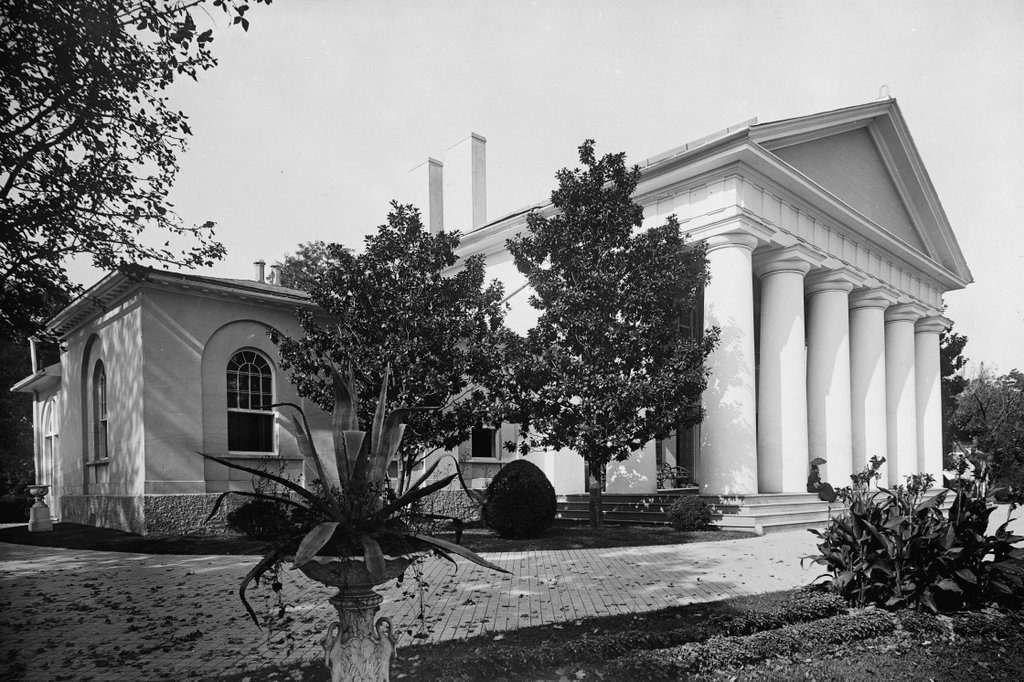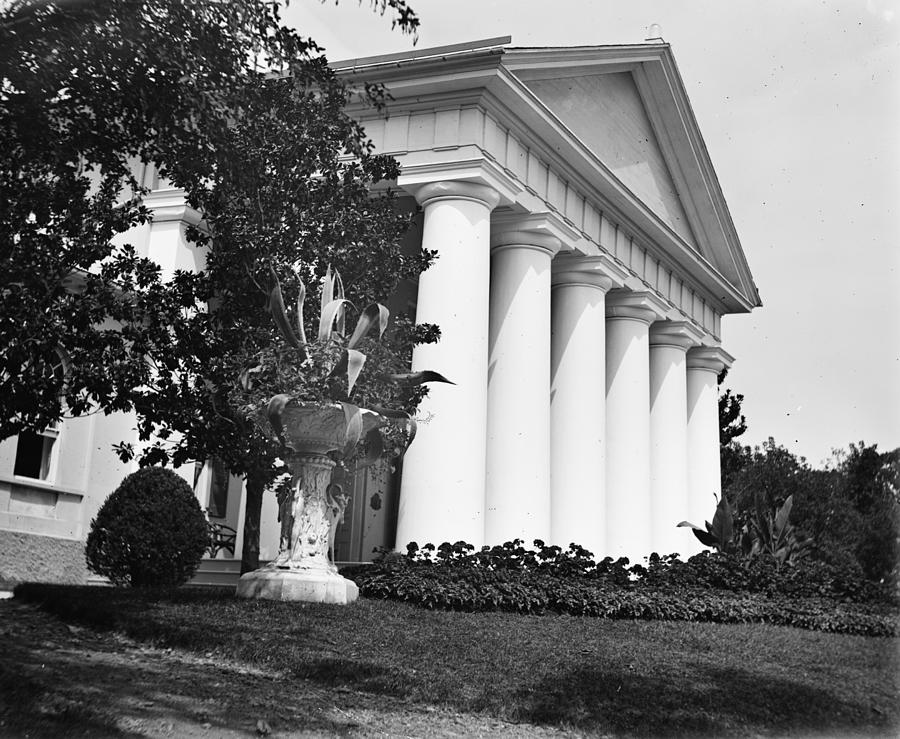Arlington House hosts descendants of enslaved, enslavers
Table Of Content
- History of Arlington House Foundation
- Wells-Halliday Mansion
- Arlington elementary schoolers cheer on the Washington Capitals during playoff pep rally
- Mapped: The historic, stately homes of West Adams Boulevard
- Guasti Villa/Busby Berkeley Estate
- Despite student suspensions, 200 protestors remain at day 4 of GW University's Israel-Hamas war protests
- Walker Mansion

They held hands and sang along as Arlington’s Mt. Zion Baptist Church led into “Lift Every Voice and Sing,” the anthem that has long been the galvanizing song of America’s Black civil rights movements. One hundred and sixty years after the last men, women and children enslaved on Robert E. Lee’s plantation were set free, their families returned from across the country to reunite with each other and their history. Selina Gray was the personal house servant to Robert E. Lee's wife, Mary Custis Lee, at Arlington House. To show how deep the roots are here — Mrs. Lee inherited the plantation home, surrounding land, and the enslaved African Americans working there from her father George Washington Parke Custis. ARLINGTON, Va. — There was a one-of-a-kind reunion over the weekend at Arlington House, the national memorial to Robert E. Lee that sits atop a hill in Arlington National Cemetery. Descendants of the Confederate general gathered with the descendants of the people the Lee family once enslaved on the property in Virginia.
History of Arlington House Foundation
Two years after graduating from West Point, Lieutenant Lee married Mary Anna Custis at Arlington on June 30, 1831. They spent much of their married life traveling between United States Army duty stations and Arlington, where six of their seven children were born. After their deaths, Mary's parents were buried not far from the house on land that is now part of Arlington National Cemetery. This 1910 mansion was designed by architect Alfred F. Rosenheim of the American Horror Story house fame for prominent lawyer Eugene W. Britt. The house is now the offices of the LA84 Foundation, “endowed with surplus funds from the 1984 Los Angeles Olympic Games,” and is home of the world's largest library for sports research.
Wells-Halliday Mansion
Custis's will provided that freedom for his enslaved could be delayed for up to five years so that their labor could be used to pay off the debts and bequests. Like a military taskmaster, Lee did not hesitate to put the enslaved to work to pay off the debts, separating them from their families and hiring them out to other plantations and employers. By 1860, all but one of the enslaved families had experienced some degree of separation from loved ones.
Arlington elementary schoolers cheer on the Washington Capitals during playoff pep rally
The Arlington household was noted for its gracious hospitality made possible by the enslaved people who worked in the Mansion and labored in the fields. Custis had an artistic and literary bent and was a noted orator, playwright, painter and federalist political partisan. His collection of Washington relics was the largest in existence, and he welcomed all to come and view them. The great political and cultural figures of the age gathered at Arlington House. Washington Irving dined at the table, as did the painter Charles Wilson Peale. Sitting presidents came to call and gather inspiration from the Washington mementos.
Mapped: The historic, stately homes of West Adams Boulevard
Arlington National Cemetery was established by Brigadier General Montgomery C. Meigs, who commanded the garrison at Arlington House, appropriated the grounds June 15, 1864, for use as a military cemetery. His intention was to render the house uninhabitable should the Lee family ever attempt to return. A stone and masonry burial vault in the rose garden, 20 feet wide and 10 feet deep, and containing the remains of 1,800 Bull Run casualties, was among the first monuments to Union dead erected under Meigs' orders. Meigs himself was later buried within 100 yards of Arlington House with his wife, father and son; the final statement to his original order.

Supreme Court, in a 5-4 decision, returned the property to Custis Lee, stating that it had been confiscated without due process. On March 3, 1883, the Congress purchased the property from Lee for $150,000. Cecilia Torres' great-great-grandmother was the personal house servant to Robert E. Lee's wife at Arlington House. Torres is part of the group working to bring back memories of her ancestors, as well as reconcile with the family that enslaved them. Stephen Hammond is Charles Syphax's great-great-great-nephew and a family historian.
Following the Union's defeat at the Second Battle of Manassas in August, 1862, the army constructed Fort Whipple on the Arlington grounds presently occupied by Fort Meyer. The fort was said to be one of the strongest fortifications for the defense of Washington during the civil war. Before leaving Arlington House, Mrs. Lee had entrusted the safekeeping of the house and its possessions to an enslaved maid, Selina Gray, with whom she had left the household keys.
Arlington home explodes after hours-long standoff with suspect who had flare gun, firearm: police - FOX 5 DC
Arlington home explodes after hours-long standoff with suspect who had flare gun, firearm: police.
Posted: Tue, 05 Dec 2023 08:00:00 GMT [source]
Board members said the increase will fund needs facing the community, including affordable housing, eviction prevention, investments in the environment and support for teenagers. Michael Robert Patterson was born in Arlington and is the son of a former officer of the US Army. So it was no wonder that sooner or later his interests drew him to American history and especially to American military history.
Human remains discovered during walkthrough of recently purchased Arlington County property - FOX 5 DC
Human remains discovered during walkthrough of recently purchased Arlington County property.
Posted: Tue, 27 Feb 2024 08:00:00 GMT [source]
She returned to Arlington House only once in 1873, a few months prior to her death, but stayed for only a few hours unable to bear the changes that the war and Union occupation had wrought. In 1863, the government levied a tax of $92.07 against the Arlington House Plantation, which could have been easily paid except that Mary Lee, the legal owner, was in Richmond and could not travel to the area to pay the tax. She attempted to have payment made by a relative, Phillip Fendall, former district attorney for the District of Columbia, but the tax collectors refused to accept payment from a third party, and Arlington was seized for nonpayment of taxes. The confiscation also included the 17 acres given to Maria Syphax by her father, George Washington Parke Custis, as no deed had been conveyed with the gift.
Custis, subsequently, ran into financial difficulties while trying to build the mansion to Hadfield's specifications. As a consequence, he built only as he could muster the resources, selling enslaved people and borrowing heavily to finance construction. As Custis was unable to afford the preferred sandstone necessary for building the walls, the house was made of red bricks which were fired on the property by enslaved workers.
He is a descendant of James Parks, who was born into slavery on the property. After he was freed during the Civil War, Parks continued to work there and went on to work for Arlington National Cemetery for 61 years. He is the only person born on the property who was later interred at the cemetery. Many participants said that the nation is still vexed by race, still struggling mightily to find its way forward.
"This is an incredibly important time in the history of our country. We are evaluating the long-term legacies of that time and this house." In 2014, philanthropist, David Rubenstein, donated $13.35 million for the restoration of Arlington House which was closed for renovation in 2018 and reopened in June, 2021. Along with material telling the stories of the Custises and Lees, there are new exhibits and information on those enslaved there, including the Norris, Gray and Syphax families. The rebirth of Arlington House with the generous contribution of David Rubenstein heralds a new commitment to opening the lens of its historical view, and ensuring, going forward, that all stories will be told and all voices will be heard. Custis Lee had never intended to live at Arlington which was now host to thousands of war-time graves. After strenuous negotiations, Custis sold the property to the government for $150,000, granting the government legal title to mansion and the surrounding land.

Luckily, the house was purchased by someone with the foresight and cash to give it the to-the-studs restoration it so badly needed. By 2012, it had made an astounding recovery and become a fantastic, livable showpiece. This vast Beaux Arts/Italian Renaissance Revival palace was built between 1910 and 1914 by winery owner Secundo Guasti. So prominent and successful was Guasti that Mussolini even visited him at this mansion. Among the house's exceptional details are a flat roof, a serrated parapet, and an arching portico, says the report for its Historic-Cultural Monument status.
Comments
Post a Comment